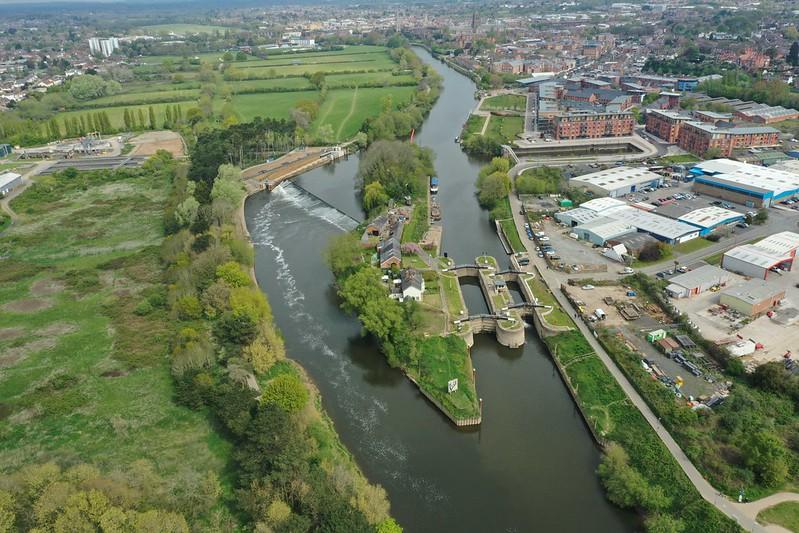
Sand Martins move into their new home at Diglis Island!
Just above the old barge on Diglis Island, Worcester is a large Nest Box overlooking the water. This is in fact a new housing facility recently created for Sand Martins, who use the river Severn as a navigation pathway when migrating.
Unlocking the Severn has been working with the RSPB and Worcester Environmental group to build and install a giant new nest box.
Unlocking the Severn is a conservation and river engagement project that aims to restore connectivity on the River Severn which will bring major benefits to its wildlife. This Sand Martin project is based on the man-made island in the middle of the River Severn, the Diglis Basin. The Victorian structure has been utilised by Unlocking the Severn as a fish pass, allowing rare fish such as the Twaite Shad to carry on downstream to their nesting grounds. Located on the island is a weir viewing point, which can be used to admire the Severn’s natural beauty. If you’re lucky, you can sometimes see visiting salmon leaping over the 2M high weir!
Hundreds and thousands of twaite shad would migrate up the river every spring until weirs were built in the 1840’s which prevented this. Unlike Salmon, Twaite Shad are unable to leap over the weirs, making it impossible for them to reach their once preferred nesting site.
Unlocking the Severn carried out surveys in 2017 highlighting a small population of Twaite Shad in the River Severn reaching as far as Worcester. Unlocking the Severn by the completion of their project, after a gap of 170 years, shad will finally make it up river again.
Diglis Basin has been frequently used as a nesting site for the Sand Martins, however, due to the drainage outlet pipes being located here, it can be a dangerous place to nest. When flood water begins to travel through the pipes, it destroys the nests, which is only too evident with the recent flooding along the River Severn.
Nesting Box Design
The Sand Martin box has been designed to resemble a sandbank, which the birds would usually excavate to nest in. The box is made of two timber lattice frameworks that are fixed together. Inside, Unlocking the Severn has placed nesting tubes made from recycled materials supplied by Wildcare.
These tubes have a slight slope, which is to resemble how sand martins excavate the cliff face to prevent water from pooling in the nest. It is common for Sand Martins to suffer during wet summers; nests are often flooded or destroyed by erosion. When we heard about Unlocking the Severn’s project, we were happy to help provide a home for our feathered friends! Find the nest boxes used here: https://bit.ly/3yi9vki
Below are some videos showing the purpose of the box as well as some of the installation processes. We think it looks outstanding, well done to everyone involved for doing such a great job, and making a number of Sand Martins extremely happy!
To read more about this project, visit the Unlocking the Severn website here: https://www.unlockingthesevern.co.uk/2022/03/25/sand-martins-at-diglis-island/
Photos provided by Adam Batsman


